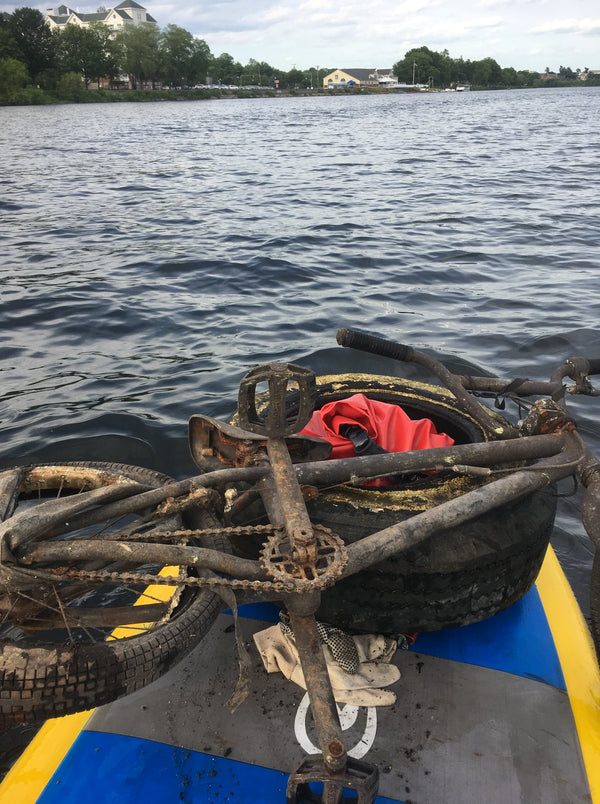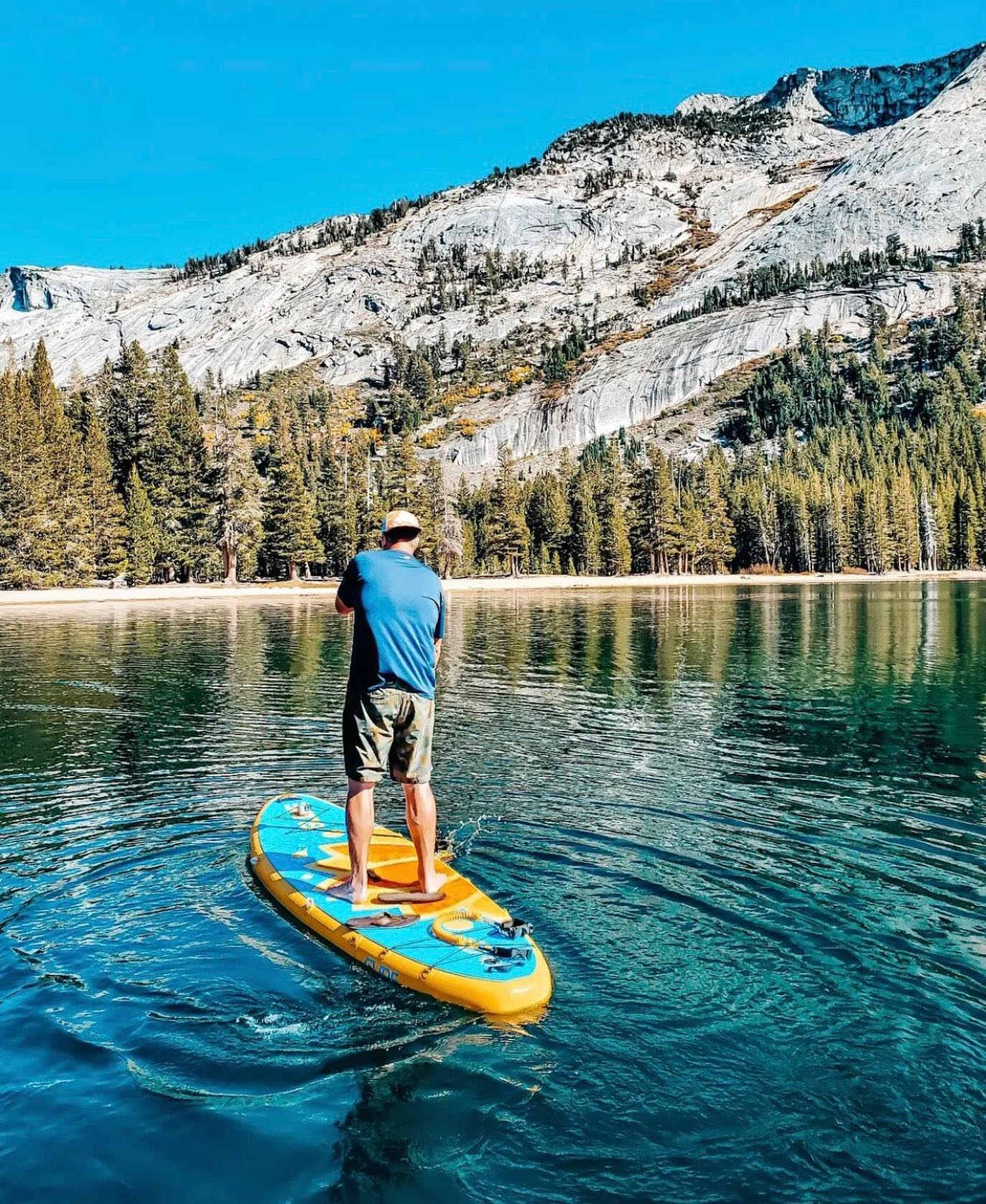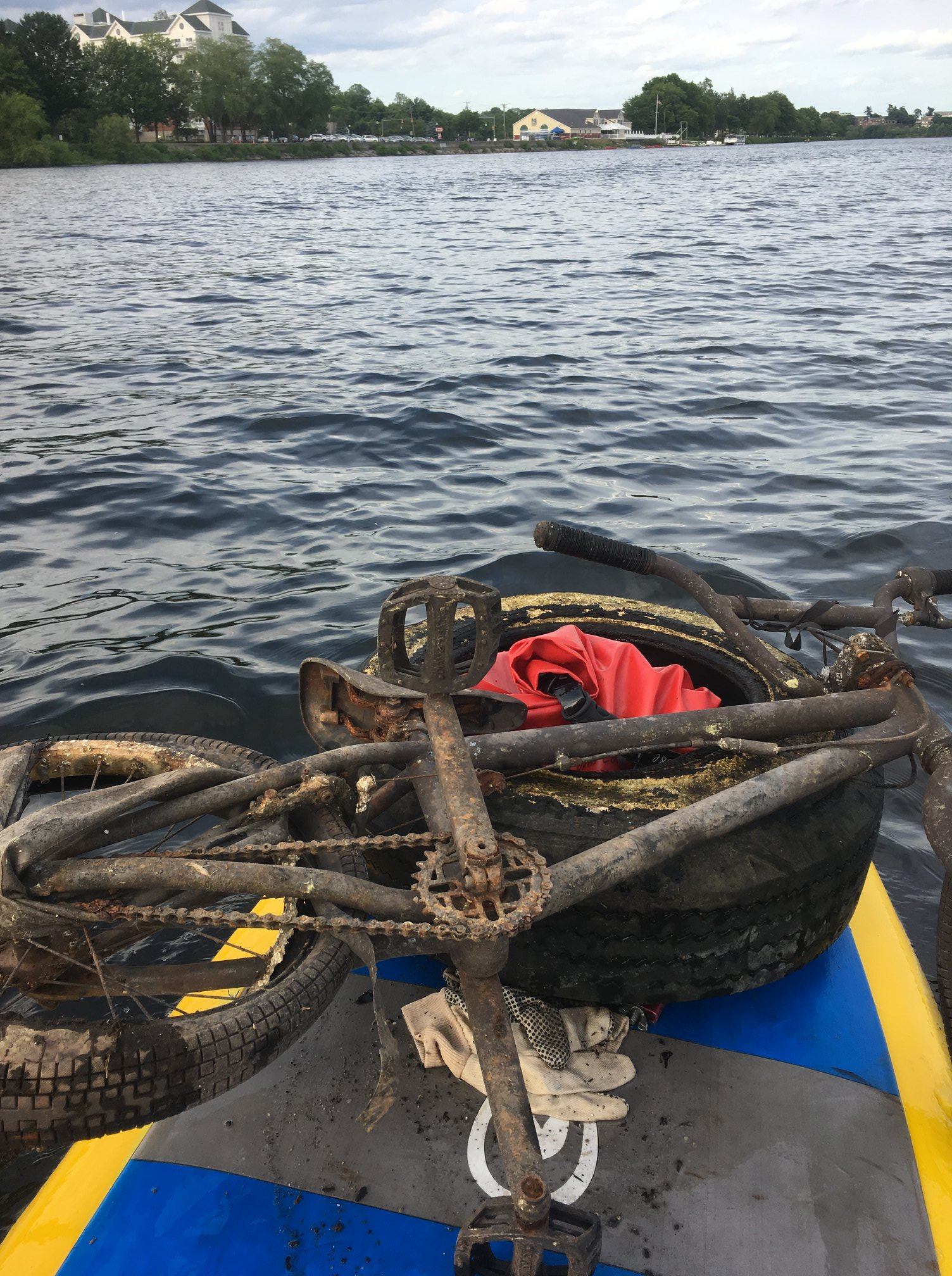
Stand Up Paddle Boarding as a Platform for Scientific Research and Environmental Monitoring
Stand up paddle boarding can be a force for good to help clean up our environment.
Stand up paddleboarding (SUP) has swiftly moved from the edge of water sports to a central role in fitness, recreation, and even scientific discovery. It's not just about catching waves or serene paddling anymore; it's a gateway to adventure, health, and a deeper connection with the natural world. At Glide SUP, we're not just crafting paddleboards; we're creating companions for your journey on the water, no matter where it takes you.
Paddleboarding: A New Wave of Exploration

Paddleboarding offers a unique platform for exploring the unseen and reaching the untouched. Glide's range of boards, from our rugged inflatable paddle boards to our sleek touring models, ensures there's a perfect match for every adventure. Whether you're drawn to SUP yoga, long-distance touring, or even SUP surfing, our boards are designed to excel.
The Scientific Side of SUP
What many don't realize is how paddleboarding is making waves in scientific research and environmental conservation. The minimal impact of SUP makes it an ideal tool for studying delicate marine ecosystems. Glide SUP boards, known for their stability and ease of maneuver, have become a choice for eco-conscious adventurers and scientists alike. They serve as silent vessels, allowing for close encounters with marine life, from the inquisitive seal to the graceful dolphin, turning paddleboarders into citizen scientists contributing valuable data for environmental studies.
Equipping for the Mission
For those embarking on SUP-based research, having the right equipment is crucial. Glide's paddle boards come with features that cater to the needs of the eco-adventurer: durability for the long haul, stability for precise data collection, and portability for reaching remote locations. Our carbon fiber paddles, known for their lightweight strength, make long expeditions less taxing, ensuring you can focus on the mission at hand.
A Platform for Environmental Guardianship

The vantage point from atop a paddle board opens up new possibilities for environmental monitoring. Glide SUP enthusiasts have been at the forefront, mapping marine debris, tracking water quality, and participating in clean-up efforts. These activities underscore the role of paddleboarders as guardians of our waterways, combining their passion for the sport with a commitment to conservation.
Advocacy Through Action
Paddleboarding inherently cultivates a respect for the environment. This connection has inspired many within the Glide community to advocate for sustainable practices and conservation efforts. Our commitment extends beyond the water; Glide is at the forefront of sustainable innovation in SUP manufacturing, constantly seeking materials and processes that reduce our environmental footprint.
Citizen Science and SUP: A Powerful Partnership
The burgeoning field of citizen science has found a valuable ally in paddleboarding. Armed with a Glide SUP and a spirit of inquiry, paddleboarders are contributing to important environmental research projects. From documenting the spread of invasive species to monitoring climate change impacts, the data collected by these intrepid individuals is invaluable. Their efforts demonstrate how recreation and science can merge, fostering a deeper understanding and appreciation of our natural world.
Navigating with Care
While embracing the thrill of SUP, it's crucial to approach the sport with an awareness of its impact. Glide advocates for responsible paddleboarding practices—respecting wildlife, minimizing disturbance, and understanding the dynamics of the ecosystems we explore. It's about finding balance: enjoying the freedom of the water while ensuring its health for generations to come.
Conclusion

Paddleboarding is more than a sport; it's a pathway to discovery, adventure, and environmental stewardship. At Glide, we're proud to be part of this journey, offering boards that are not only high in performance but also champions of the planet. As you paddle forward, remember that each stroke in the water is a step toward understanding and preserving our magnificent waterways. Let's make every paddle count.


